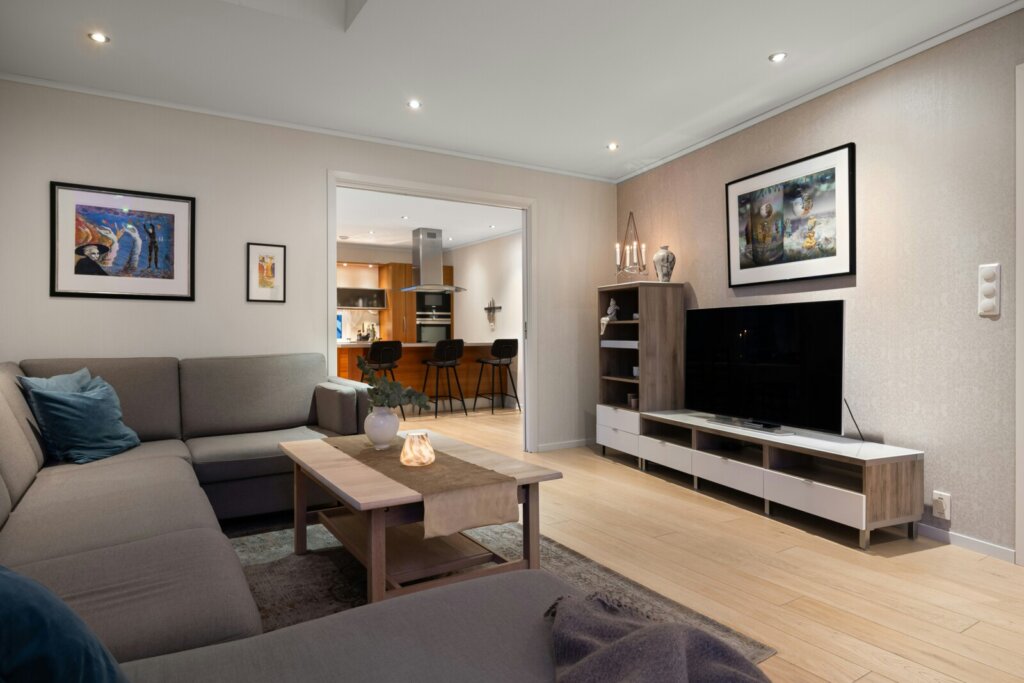Home Refurbishment Overview – What to Know About Cost & Planning

Refurbishing a home is one of the most rewarding investments you can make, but it’s also one of the most complex. From setting a budget to choosing the right contractors, every decision has a ripple effect on cost, timeline, and long-term results.
This guide walks you through the essentials; what drives costs, how to plan effectively, and common pitfalls to avoid so you can approach your project with clarity and confidence.
Why Planning Matters in Home Refurbishment
- Prevents unexpected expenses by uncovering hidden issues early and reduces financial surprises.
- Helps set a realistic timeline, avoids rushed decisions, and keeps work on track.
- Ensures compliance with building regulations, especially important for structural changes.
- Allows you to prioritise essential vs. optional work and ensures the budget goes to what matters most.
Pro Insight: A structured plan often reduces project delays by up to 20%.
What Affects the Cost of Home Refurbishment?
Several factors shape the overall cost of a home refurbishment project, they are:
1. Size and Scope of Work
The overall cost of refurbishment depends heavily on scale. A full house refurbishment can involve everything from rewiring and plumbing to plastering and flooring, which is significantly more expensive than single room updates such as a bathroom or kitchen refresh. Additionally, structural changes like knocking down walls or adding extensions typically add more complexity and cost compared to cosmetic finishes such as painting or flooring updates.
2. Quality of Materials
Your choice of finishes can greatly influence the budget. For example, budget laminate flooring may be cost-effective, but solid oak or engineered wood carries a premium. Lighting design, kitchen fittings, and bathroom fixtures also vary dramatically in price depending on whether you opt for standard or high-end finishes. While premium materials often come with higher upfront costs, they usually deliver better durability and long-term value.
3. Labour and Specialist Services
Labour is one of the most significant cost elements. General builders are suitable for many tasks, but projects that involve electrical rewiring, plumbing, or structural work require specialist contractors. Though more expensive, hiring the right professionals ensures compliance with regulations and reduces the risk of costly mistakes.
4. Location & Accessibility
Your property’s location and type can also influence cost. For example, labour rates in London and the Southeast are generally higher than other regions. Accessibility also matters. Refurbishing a terraced house with limited access for materials and skips can increase logistical costs compared to a detached property.
How to Budget Effectively for Home Refurbishment
Budgeting is where many homeowners stumble, but it’s the foundation of a successful refurbishment. Here’s how to approach it:
- Create a clear scope of work before seeking quotes, this avoids vague or misleading estimates.
- Factor in contingencies (10–15%) to cover hidden issues like damp, structural weaknesses, or rewiring needs.
- Consider phasing work if your budget is limited; you might refurbish the kitchen first and the bathrooms later.
If you’re unsure where to begin, our house refurbishment services provide clear guidance on what’s needed to structure and phase your project effectively.
Planning Steps for a Successful Refurbishment
Step 1: Define Your Goals
- Decide whether your refurbishment is about personal comfort, increasing property value, or preparing for sale. Your goals will shape decisions on design, materials, and budget.
Step 2: Get Professional Advice
- Our in-house architects, surveyors, and designers highlight structural challenges, layout improvements, and potential hidden issues. Early advice prevents costly mid-project changes.
Step 3: Secure Permissions if Needed
- Not all projects require planning permission, but structural changes, extensions, or work on listed properties often do. Even cosmetic updates must comply with UK building regulations for electrical, plumbing, and fire safety.
Step 4: Set a Timeline
The duration of a home refurbishment largely depends on the scale and type of work being carried out.
- Light refurbishments: These take 2-4 weeks. It includes cosmetic updates such as painting, flooring replacement, or updating fixtures.
- Full refurbishments: This takes 2-6 months. It involves multiple rooms, structural changes, or high-end finishes that take significantly longer due to design, approvals, and specialist work.
It’s also important to factor in buffer time for potential delays caused by supply chain issues, weather, or hidden structural challenges. Since every property and project is unique, the most accurate way to understand your timeline is to speak directly with our specialist to assess your specific requirements.
Common Mistakes to Avoid
Many refurbishment challenges come down to poor preparation. Avoid these pitfalls:
- Underestimating costs by ignoring hidden structural or electrical issues.
- Not planning for temporary accommodation during major works.
- Choosing contractors solely based on the cheapest quote can lead to poor workmanship.
- Skipping contracts or written agreements can leave you unprotected if problems arise.
Final Thoughts
Home refurbishment can be complex, but with clear planning, realistic budgeting, and professional input, you can achieve a smooth and successful outcome. If you’re considering a project, it may be worth speaking with our team at Kova Interiors, who understand residential refurbishment in detail and will guide you every step of the way.
FAQs
How do I estimate the cost of a home refurbishment?
Start with the size and scope of your project, factor in materials and labour, and always include a 10–15% contingency.
What is the difference between refurbishment and renovation?
Refurbishment typically means improving or updating existing spaces, while renovation may involve structural changes or reconfiguration.
Can I live at home during refurbishment?
Yes, for smaller projects. However, major refurbishments may require you to temporarily move out due to dust, noise, or safety reasons.
Do I need planning permission for refurbishment?
Not always. Cosmetic updates don’t usually require permission, but structural work, extensions, or listed property changes often do.
How can I save money on home refurbishment?
Reuse materials where possible and phase the work.